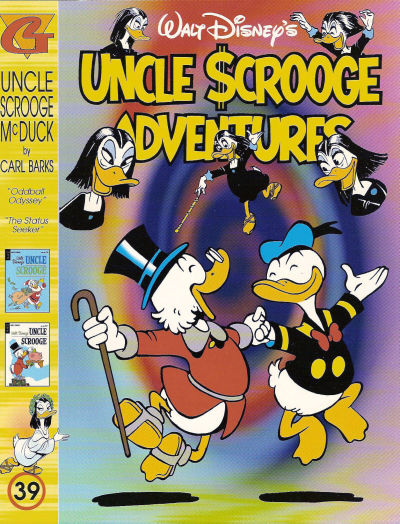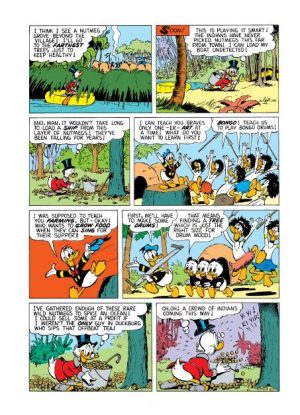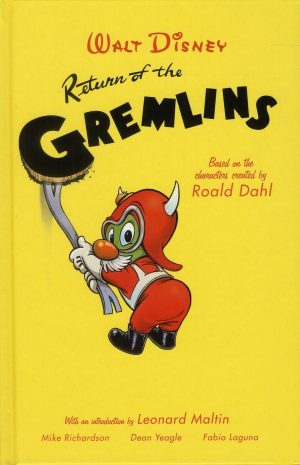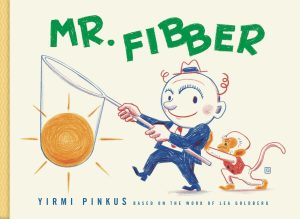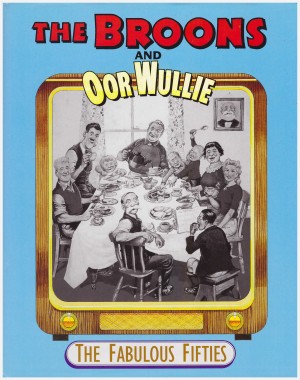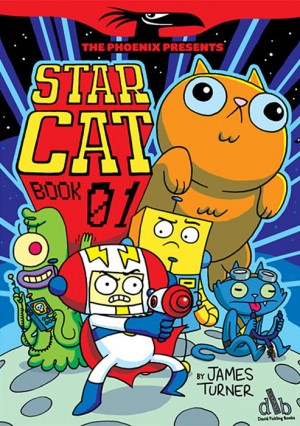Review by Frank Plowright
‘Oddball Odyssey’ is an anomaly in the Carl Barks catalogue. From January 1963 Western Comics ceased acting as a packager of material to be published by Dell, instead creating their own Gold Key imprint, and Uncle Scrooge comics began appearing with the Gold Key logo. As part of the new look it was decided to do away with panel borders and square off all dialogue balloons. Perhaps there was a good reason, but within a year all Gold Key comics reverted to the traditional designs. Barks really disliked the new format, and only drew the single story using it. The sample art shows the new style dialogue balloons, but when republishing ‘Oddball Odyssey’, Gladstone added panel borders. They’re removed again when the story is republished in the Fantagraphics hardcover collection Cave of Ali Baba.
Also, for the next few volumes it’s back to two longer stories per issue. In the original comics Barks’ Scrooge work was accompanied by a Gyro Gearloose short, gathered in separate collections, and Scrooge strips drawn by Tony Strobl, whose work has never proved popular enough to be gathered in collections.
While the drawings of ‘Oddball Odyssey’ have the grace and charm of Barks’ usual cartooning, it’s strange how the uniform larger gaps between tiers of panels serve to suck the energy slightly. It’s a shame as it’s a good story of Scrooge bewitched by Magica De Spell into bringing his Number One Dime to her. Overlook the coincidence of Magica choosing a meeting place where the wand with which Circe transformed men into animals is hidden behind a wall, and it’s a fine romp with plenty of good jokes and a dark moment of the soul for Scrooge. However, it’s a massive coincidence and the ending is weak, and it’s hard to imagine the Barks of ten years earlier being satisfied.
Snobbery isn’t a theme Barks often used, but when he did it was plain he was offended by those who look down on others, and the snobs in his stories never fared well. ‘The Status Seeker’ begins with Scrooge being asked for his invitation to a swanky do, and told that it’s only for people who own things giving them status, accompanied by a funny drawing of a woman staggering through the weight of the diamond around her neck. Another carries hers in a wheelbarrow. The whole sequence is a visual tour de force.
The story becomes a quest to recover a ruby Scrooge traded away and which has never been seen in the years since, so an object of mystery, and therefore a status symbol exclusive enough to impress the snobs. It’s a great, and under-rated story, a gem from Barks’ late period. The visual throwaways continue, the roadblocks are well conceived, and the ending to the adventure sequence is well foreshadowed. So is the actual ending, as Barks underlines the hollowness of a person’s value being determined solely on what they own. It’ll be more easily found in 2024 when Fantagraphics release the next of their hardcover Uncle Scrooge reprints.
